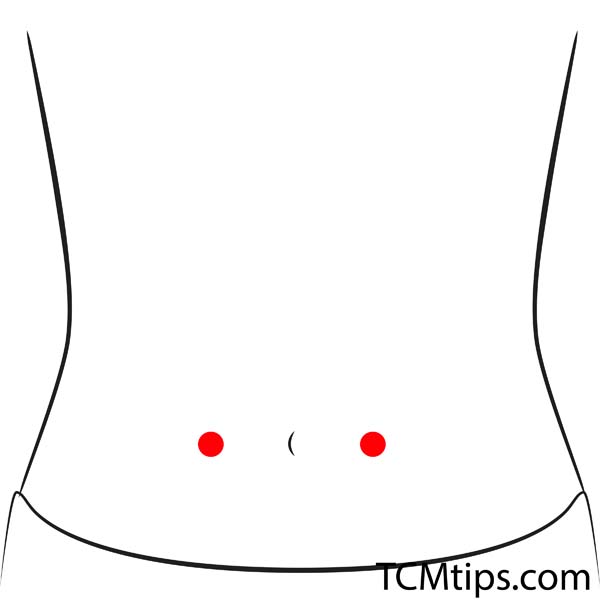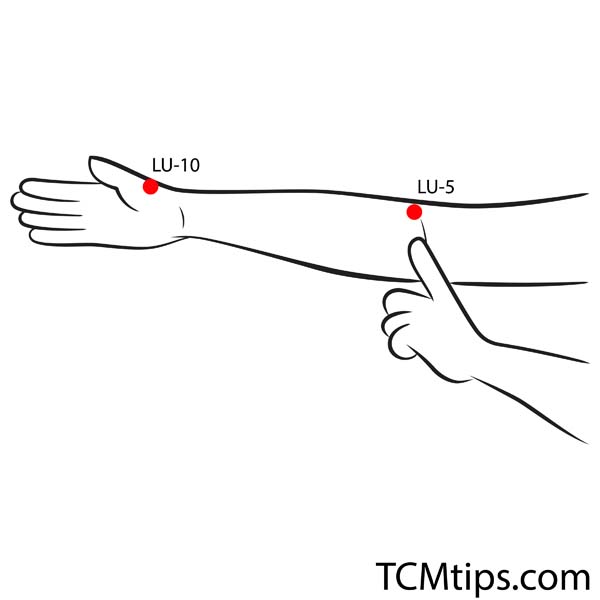The flu is a contagious illness caused by the influenza virus, and it primarily affects the respiratory system. In Traditional Chinese Medicine, the flu is linked to overall physical health with a close relation to kidney health. Kidney health is thought to decline in the winter as the cold can decrease its function and allow viruses to enter the body. TCM addresses the flu through preventative acupuncture points for flu. Acupuncture for the flu focuses on maintaining the health of your kidneys and digestive system, as well as the body’s overall health, so it is more resilient to the flu.
What Is The Flu?
The flu is a respiratory virus that spreads from person to person through tiny droplets of mucus and saliva in the air. This viral infection targets the nose, throat, and lungs, but fatigue from its effects can be felt throughout the body.
This virus affects between 5% to 20% of the American public on a yearly basis. Some people may not show symptoms, while others can have severe symptoms, like sinus congestion and a sore throat. The flu can also lead to secondary infections, making it deadly in some cases.
Can Acupuncture Help With Flu?

The flu does not come with a perfect cure, but it does come with some powerful preventative measures. Humans have dealt with flu for centuries, and as a result, Traditional Chinese Medicine has found some effective methods for preventing the flu and limiting its impacts.
Acupuncture treatment has long been known to support the immune system when used properly. Research has proven acupuncture points for flu to have a positive impact on the body’s ability to mount immune responses to viruses and increase the phagocytosis of viruses once they have invaded the body.
If you are healthy and preparing for flu season, acupuncture can help prevent you from getting sick. While acupuncture points for flu are best used as a preventative measure, they can also be used in combination with supportive treatment for the alleviation of symptoms in patients who are already infected.
Can Acupuncture Cause Flu-like Symptoms?
Acupuncture is known as a safe method of treatment for most conditions because it has few side effects. However, the side effects it can have are concerning at first glance. Ironically enough, acupressure points for fever and headache can sometimes cause a mild fever or headache. Individuals who have not had an acupuncture treatment in a long time or do not move frequently may feel heavier or have some flu-like symptoms after acupuncture.
This aching or sensation of a mild fever is the result of acupuncture points for flu, helping your body flush out long stagnant toxins. You will know if these side effects are the result of acupuncture and not actual flu symptoms if they only last a few days. If you have chronic illnesses that are being treated with acupuncture, these symptoms may last longer, but they should never be debilitating.
What Acupuncture Points Are Best For The Flu?
Any acupressure points for immune system support are great points for preventing the flu. That being said, some are simply more effective than others, and the top 5 are listed here so you can start an anti-flu acupuncture regime right away!
Acupoint: GV-14 (Other Names: The Governing Vessel-14/Da Zhui/Great Vertebra)
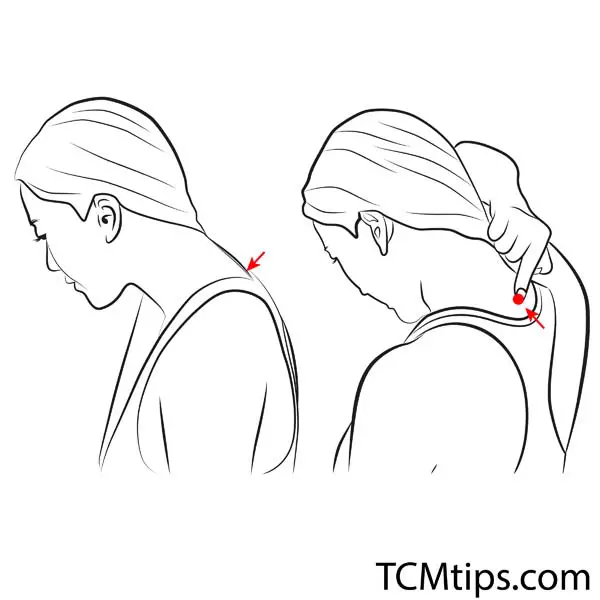
Yang energy is believed to help protect the body from infectious diseases, and these energy channels converge at a special point, GV-14. This governing vessel point is commonly used in acupressure for sinus inflammation and acupressure for viruses. For those attempting to prevent the flu, this point improves the body’s defense. Individuals who are already ill with the flu will find that this point helps reduce their fever and respiratory symptoms.
Governing Vessel – 14 can be found on the back of the neck at the seventh cervical vertebrae. If you are flexible, this point should be accessible for you to apply pressure with your fingers. If you can not reach your seventh cervical vertebrae on your own, then you can apply heat to the area or ask for assistance from a friend.
Acupoint: ST-36 (Other Names: Stomach-36/Zu San Li/Leg Three Miles)
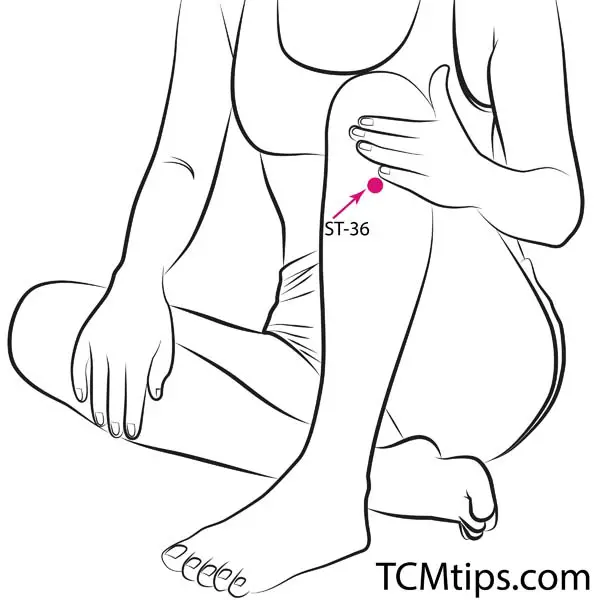
The stomach plays an important role in maintaining the health of the body and supporting the immune system. ST-36 is a point that supports the stomach’s functions, so it may better support normal body functions that prevent the onset of the flu. This is also one of a few especially effective acupressure points for stomach flu. The impacts of this acupoint are so wide-reaching that it is also commonly used in acupuncture for eye bags.
You can locate stomach point 36 by measuring 3 cun down from the bottom of the kneecap and applying pressure to the outer portion of your leg where your tibia lies.

When activating this point, be sure to breathe deeply and apply firm pressure with your thumb. Proper activation will result in a reduction of any current pain and an improvement in the flow of protective energy within your body.
Acupoint: Ren-12 (Other Names: The Conception Vessel-12/Zhong Wan/Middle Epigastrium)
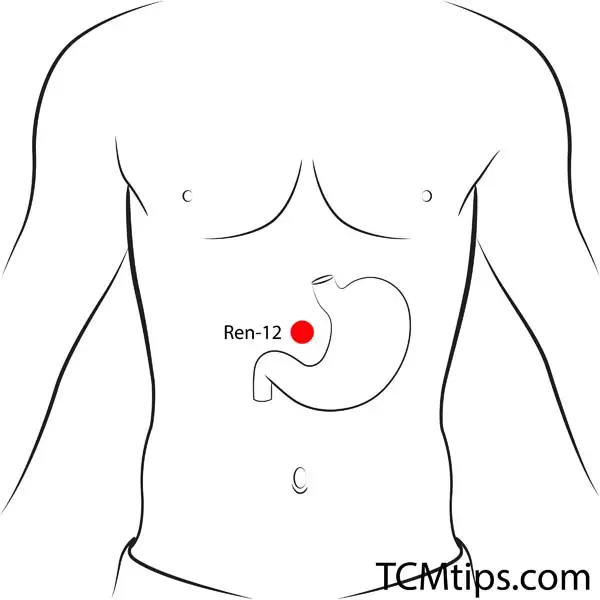
Ren-12 is a converging point of many intestinal-health-related pathways, giving it the ability to balance the stomach and spleen. When the digestive organs are balanced and properly functioning, the body is better able to fight off diseases and resume natural functions. Ren-12 is commonly used in acupressure for inflammation because of its wide-reaching effects.
You can locate and activate Ren-12 by measuring 4 cun up from your belly button. This point is perfectly centered on your body and should be activated with firm pressure. If you activate this point properly, it should not cause much discomfort, and it can even improve your appetite and reduce any excess phlegm.
Acupoint: ST-25 (Other Names: Stomach-25/Tian Shu/Celestial Pivot)
The previous two acupoints are most impactful on the immune system when they are combined with this third point, ST-25. Much like Ren-12 and ST-36, ST-25 acts to balance intestinal function, and as a result, it bolsters immune function. This point is commonly used in acupressure for bowel inflammation, but its impacts are wide-reaching. The increase in blood flow and energy influenced by this point serves to support the immune system by moving white blood cells around the body and supporting lymph movement in the intestinal area.
When the two mirrored ST-25 points are activated, dampness is dispelled from the body, and there is an improvement in blood flow which often causes a feeling of renewed energy. These points are located in line with the belly button, with one 2 cun to the left, and the other 2 cun to the right. Apply a comfortable yet firm amount of pressure to activate this point, and be sure to treat both sides for balance.
Acupoint: LU-5 (Other Names: Lung-5/Chi Ze/Cubit Marsh)
Prioritizing the support of lung function makes perfect sense when it comes to preventing a respiratory illness like the flu. This is exactly why LU-5 is included in the top 5 acupuncture points to treat and prevent the flu. Once activated, this point increases blood flow to the respiratory system and expels excess phlegm. The increased circulation to the lungs maintains a healthy flow of white blood cells to the area where the flu is most likely to attack.
LU-5 is also known for its use in acupuncture for bicep tendonitis and that is because this point is actually located on either arm. If you hold your arm out with your thumb facing upward, you will notice a crease on the inner section of your elbow. LU-5 sits at the end of this crease on the side closest to your thumb. Activate this point on both arms using firm yet gentle pressure for best results.
In Conclusion:
- GV-14 improves the flow of protective yang energy throughout the body, allowing the body to better fight viruses like the flu.
- ST-36 supports natural stomach functions that decrease inflammation and support overall health.
- Ren-12 balances stomach and liver functions which removes excess phlegm and supports a healthy appetite for continued strength.
- ST-25 improves blood flow around the stomach for improved immune cell dispersion in the circulatory system.
- LU-5 focuses on the respiratory system, healing and reinforcing the lungs, so they are well prepared to handle the flu virus.

Try our Anti-Aging Gua Sha Tool designed to bring out your skin’s natural glow.
Best Gua Sha Product- Anti-Aging: The tool is designed to target 11 specific aging signs such as wrinkles and sagging skin. By following the 7-step routine, users can improve skin firmness and reduce fine lines naturally.
- Enhances Skincare Routine: It works effectively with serums and lotions, boosting absorption and efficacy of skincare products.
- Visible Skin Improvement: Users can expect a smoother complexion, reduced puffiness, and a more youthful appearance.
 P. Sze
P. Sze 
